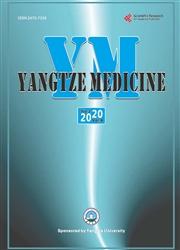Clinical Application of Fetal Umbilical Vein Doppler Parameters in Maternal Preeclampsia
引用次数: 0
Abstract
Objective: To observe the changes of fetal umbilical vein (UV) Doppler parameters in pregnant women with preeclampsia (PE) and analyze their pre-dictive values for maternal PE. Methods: Forty-six patients with PE who underwent systematic ultrasound examination in our hospital from December 2017 to May 2021 were included as the subjects, which were divided into two groups according to the severity of the disease (23 cases in each group). And 120 normal pregnant women who underwent health examination in our hospital during the same period were enrolled as the control group. Color Doppler ultrasonography was used to monitor the umbilical vein flow (QUV), left portal vein flow (QLPV), venous catheter flow (QDV), left portal vein (LPV) shunt rate and venous catheter (DV) shunt rate. And the sensitivity and specificity of the related indexes were calculated and analyzed according to the gold standard for clinical diagnosis of PE. Results: As the severity of PE increased, the fetal QUV, QLPV and LPV shunt rates decreased, and the QDV and DV shunt rates increased, with statistically significant differences compared with the control group (P < 0.05). The specificity and sensitivity of the combination of fetal QUV, QLPV, QDV, LPV shunt rate and DV shunt rate in predicting PE were higher than those of the indexes used alone (P < 0.05). Conclusion: The fetal umbilical vein Doppler parameters QUV, QLPV, QDV, LPV shunt rate, and DV shunt rate have some value in predicting PE, but their combination showed greater value, as well as higher diagnostic and clinical significance.胎儿脐静脉多普勒参数在母体子痫前期的临床应用
目的:观察先兆子痫(PE)孕妇胎儿脐静脉(UV)多普勒参数的变化,分析其对母体PE的预测价值。方法:选取2017年12月至2021年5月在我院行系统超声检查的PE患者46例作为研究对象,根据病情严重程度分为两组,每组23例。选取同期在我院接受健康检查的正常孕妇120例作为对照组。采用彩色多普勒超声监测脐静脉流量(QUV)、左门静脉流量(QLPV)、静脉导管流量(QDV)、左门静脉(LPV)分流率和静脉导管(DV)分流率。并按照PE临床诊断的金标准计算分析相关指标的敏感性和特异性。结果:随着PE严重程度的加重,胎儿QUV、QLPV、LPV分流率降低,QDV、DV分流率升高,与对照组比较差异均有统计学意义(P < 0.05)。胎儿QUV、QLPV、QDV、LPV分流率、DV分流率联合预测PE的特异性和敏感性均高于单独使用指标(P < 0.05)。结论:胎儿脐静脉多普勒参数QUV、QLPV、QDV、LPV分流率、DV分流率对PE有一定的预测价值,但它们的组合更有价值,具有更高的诊断和临床意义。
本文章由计算机程序翻译,如有差异,请以英文原文为准。
求助全文
约1分钟内获得全文
求助全文

 求助内容:
求助内容: 应助结果提醒方式:
应助结果提醒方式:


